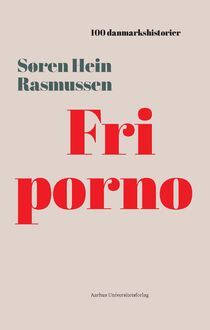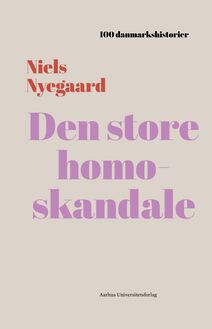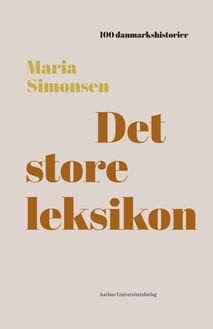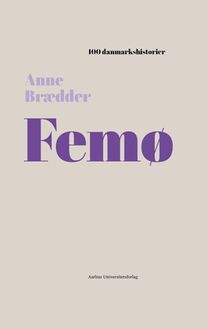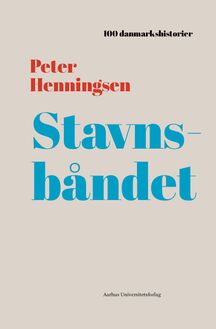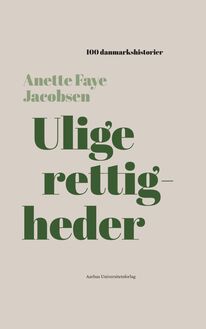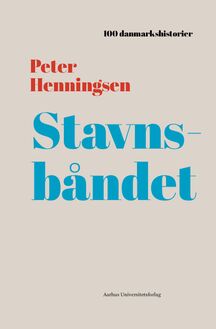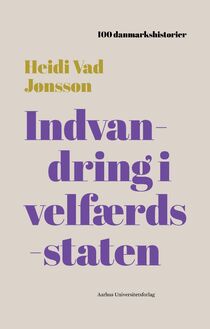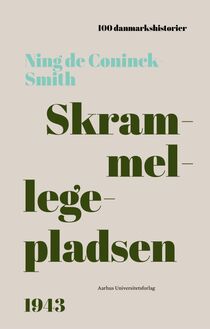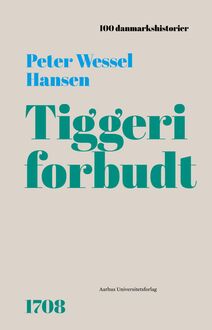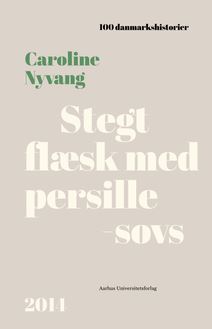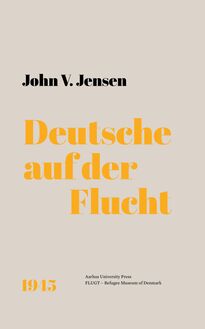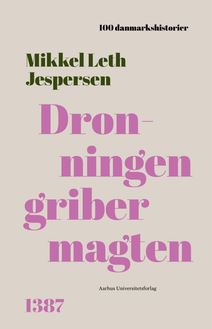-
 Univers
Univers
-
 Ebooks
Ebooks
-
 Livres audio
Livres audio
-
 Presse
Presse
-
 Podcasts
Podcasts
-
 BD
BD
-
 Documents
Documents
-
- Cours
- Révisions
- Ressources pédagogiques
- Sciences de l’éducation
- Manuels scolaires
- Langues
- Travaux de classe
- Annales de BEP
- Etudes supérieures
- Maternelle et primaire
- Fiches de lecture
- Orientation scolaire
- Méthodologie
- Corrigés de devoir
- Annales d’examens et concours
- Annales du bac
- Annales du brevet
- Rapports de stage
La lecture à portée de main
Vous pourrez modifier la taille du texte de cet ouvrage
Découvre YouScribe en t'inscrivant gratuitement
Je m'inscrisDécouvre YouScribe en t'inscrivant gratuitement
Je m'inscrisEn savoir plus
Vous pourrez modifier la taille du texte de cet ouvrage
En savoir plus

Description
Sujets
Informations
| Publié par | Aarhus University Press |
| Date de parution | 12 mars 2020 |
| Nombre de lectures | 0 |
| EAN13 | 9788772191904 |
| Langue | English |
| Poids de l'ouvrage | 1 Mo |
Informations légales : prix de location à la page 0,0550€. Cette information est donnée uniquement à titre indicatif conformément à la législation en vigueur.
Extrait
Titelside
Focus on Danish History
Thomas Bloch Ravn
Aarhus University Press
The battle of the museums
The Mayor s House, at the National Exhibition held in Aarhus in 1909. Its presence there was the outcome of a clash between two museum factions with very different views. This has since coloured the Danish discourse on the role of museums in society. Should they mainly focus on objects, or on people? Section of a drawing by Franz ediv (1864-1945).
|| Illustreret FamilieJournal /Royal Danish Library
From prehistory to people
The Danish National Exhibition of 1909 was held in Aarhus. This was a huge event for the town, marking its new rank as the country s second-largest urban centre - though not yet a true city. Opening on Tuesday, 18 May 1909, it showcased Denmark s best industrial products, craftsmanship and culture. One young teacher from Aarhus was particularly pleased and excited that day. His name was Peter Holm (1873-1950), and it was thanks to his enormous efforts that a historical exhibition was to be shown in a building newly named the Old Mayor s House - erstwhile home to several town mayors - which had been relocated to the exhibition grounds and re-erected there, piece by piece. It was a make-or-break moment. The guests would include the King, the Crown Prince, the town s Lord Mayor and a host of other public figures.
Peter Holm was immensely proud. He was also on the verge of collapse, having worked day and night to get the Old Mayor s House and its period rooms ready for the grand opening - the culmination of his pet project and passion since 1907.
It had not been easy. While the exhibition s organisers had consistently supported Holm s work and vision, a certain circle behind Aarhus Museum (founded in 1861) had fought the entire project. Little wonder that when the National Exhibition closed almost six months later, Holm was relieved to find that the Old Mayor s House had been among its most successful attractions.
This fuelled Holm s keen historical interest. His dream of a permanent open-air museum for urban cultural history began to take shape, with the Old Mayor s House as its beating heart. His ambition was to found a museum about the people who had lived out their lives in the Danish merchant towns. He envisioned a museum not just for those who shared his special interest, but for all those whose hearts and minds such a place could reach. His dream became a reality. Five years later, in 1914, Holm opened the doors to a museum which, in just a few years, had developed into Den Gamle By - the old town .
Peter Holm s thinking and plans squarely contradicted the mainstream view in museum circles: that scientific pursuits and prehistory - the time before written sources - were a museum s highest purpose. The irreconcilable conflicts to which this gave rise are the backdrop of the story in this book. Some might say the controversy was only interesting or remarkable for Aarhus, or for Denmark. Initially it was provincial, even parochial I admit, yet its perspectives are wider. In fact, the conflict described here is a clearly manifested articulation of various clashes that occurred within the museum communities of Denmark and certain other countries. In Denmark these disputes solidified in the decades around 1900, becoming embedded in the mindsets and in the structures and dilemmas that have since typified the Danish museum landscape. Should museums be about objects , or about people ? Is distant prehistory more important than the times visitors can relate to personally? Should museums be for researchers or for ordinary people? And who should decide what museums ought to be?
In that sense the battle over the Mayor s House mirrors the broader history of Denmark s cultural-history museums. Note that we are not talking about museums of art or natural history. Rather, our main concern here is the history of museums that deal with cultural history, harking back to royal and aristocratic cabinets of curiosities - represented most prominently in Denmark by the Royal Cabinet of Curiosities, assembled in Copenhagen in the mid-1600s from even older collections. These cabinets eventually evolved into today s rich and varied museum community, as seen in Denmark s gradual move towards more inclusive museums that reach out to a wider audience.
This broad appeal is one reason why Danish museums are attracting more and more guests: in 2018, over eight million individual admissions to cultural-history museums alone - in a country of 5.8 million. In Denmark, cultural-history museums are a crucial window for personal identity and history. This trend may also suggest a greater need for contemplation nowadays. Taking a moment to wonder: Where did we come from, and where are we going? As is often said of the present, now is just the blink of an eye. A place we perch, briefly, on the way from past to future. History is what ties it all together, and that is where the credibility of museums, and their popular base, have a vital role to play.
The eyes of a stranger
The rootedness of Danish and other Scandinavian museums in ordinary people s lives was underscored by the Catalan journalist Lara Saiz Moya during a visit to Den Gamle By open-air museum one fine spring day in 2014. Moya had spent a few months in Aarhus and visited Den Gamle By several times, and that day we discussed its history. With Aarhus as her base, she had seen cultural museums in Denmark, Sweden and Norway, noting their focus on people as a unique trait.
The eyes of a stranger often discern more acutely the things locals take for granted. So too the Catalan journalist in Scandinavia. While the museums Moya had seen elsewhere especially focus on what is exceptional - superb art, ancient objects, great memorials, castles, citadels, churches and extraordinary objects, describing the history and power of the elite - in Scandinavia she saw museums that focus on ordinary lives and history. Not just in olden times, but (nearly) up to the present. She also noticed how our museums are often more inviting and communicative towards a more diverse audience.
This focus can be traced back to the ideal philosophy of Enlightenment, which in the late 1700s aimed to educate and edify the population at large. Also, part of the National Romanticism of the 1800s was the need to create common, cohesive identities for the emerging nation-states of Europe. Finally, the decades around 1900 saw a wide range of fundamental shifts occur in the complex process that created the Danes as a people and gave them democratic rights, equality and a sense of citizenship in the emerging modern society. This shift strongly affected the Danish language, and Norwegian and Swedish, adding loads of compound words with the prefix folke- : of the people , or popular in the sense broadly rooted . Notable examples include folkestyre (democracy), the Folketing (the Danish parliament), folkeskole (the public school system), folkeh jskole (a folk high school) and folkekirken (the Danish Lutheran state church). And, of course, the Scandinavian folkemuseer (folk museums).
Peter Holm was 26 years younger than Aarhus Museum s board chairman, Consul Frederik Ollendorff (1847-1918) - a gap that matched the gulf between their views of what a museum ought to be. Ollendorff found it crucial to show prehistory through individual objects, while Peter Holm wanted to show lives and stories from the recent past. Photos taken around 1910.
|| Den Gamle By
The Welsh museum director John Williams-Davies (b. 1949) pointed out in an article from 2009 in the British journal Folk Life , that the Scandinavian open-air museums founded around 1900 were quite unique. First, they concentrated on showing the history of ordinary people - as the first ever, he emphasised. Second, their ambition was to present history for ordinary people. Not just an exceptional approach, but radically new.
This special Scandinavian inclination is little more than a century old. And looking back at the turbulent times when museum visions and concepts struggled for dominance, it was by no means certain this inclination would prevail, or gain such a strong following as to become a trait that strangers to the region notice. This point is plainly illustrated in the story of the stormy and ultimately irreconcilable conflict in the formative years of Den Gamle By, from 1907 to 1914.
The dispute
The figure at the core of the conflict was Peter Holm, born on 14 May 1873 into a family of craftsmen in Aarhus. He graduated as a teacher in 1891, and in 1898 he also became a certified translator. He never earned an academic degree, but even as a youth Peter Holm was fascinated by his home town and its history, and concerned about the inexorable changes progress brought to the streets, squares and urban quarters he knew so well and could recall in minute detail. An avid traveller, he had visited numerous museums abroad, and his hard-working, practical, solution-driven approach made him much sought after in his home town.
In 1907 he was elected to the board of Aarhus Museum and became involved in the exhibition plans for 1909. These two functions were to become intimately linked in Holm s life, affecting it in very different ways.
Aarhus Museum, founded in 1861, was one of the first Danish museums outside Copenhagen. Focusing on prehistory, it paid little heed to the modern history of recent centuries, or to people s daily lives back then. The secondary collection of more recent objects became Holm s remit when he joined the board in 1907.
The National Exhibition also called on the young teacher, asking him to organise its historical contents. Like the great world s fairs (beginning in London in 1851), the 1909 National Exhibition in Denmark aspired to not only look to the future, but to combine this with looking into the past.
Seeking a physical framework for his exhibition, Holm heard of a large merchant complex from 1597 in
-
 Univers
Univers
-
 Ebooks
Ebooks
-
 Livres audio
Livres audio
-
 Presse
Presse
-
 Podcasts
Podcasts
-
 BD
BD
-
 Documents
Documents
-
Jeunesse
-
Littérature
-
Ressources professionnelles
-
Santé et bien-être
-
Savoirs
-
Education
-
Loisirs et hobbies
-
Art, musique et cinéma
-
Actualité et débat de société
-
Jeunesse
-
Littérature
-
Ressources professionnelles
-
Santé et bien-être
-
Savoirs
-
Education
-
Loisirs et hobbies
-
Art, musique et cinéma
-
Actualité et débat de société
-
Actualités
-
Lifestyle
-
Presse jeunesse
-
Presse professionnelle
-
Pratique
-
Presse sportive
-
Presse internationale
-
Culture & Médias
-
Action et Aventures
-
Science-fiction et Fantasy
-
Société
-
Jeunesse
-
Littérature
-
Ressources professionnelles
-
Santé et bien-être
-
Savoirs
-
Education
-
Loisirs et hobbies
-
Art, musique et cinéma
-
Actualité et débat de société
- Cours
- Révisions
- Ressources pédagogiques
- Sciences de l’éducation
- Manuels scolaires
- Langues
- Travaux de classe
- Annales de BEP
- Etudes supérieures
- Maternelle et primaire
- Fiches de lecture
- Orientation scolaire
- Méthodologie
- Corrigés de devoir
- Annales d’examens et concours
- Annales du bac
- Annales du brevet
- Rapports de stage
